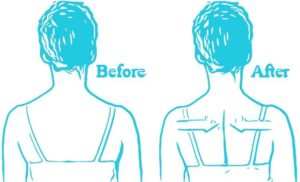Contraction Against Resistance
Also called isometric exercises, these kinds of activities can be really helpful in breaking up your workday and stopping muscle tension from building up. These can also be used as a management strategy for pain flare-ups, or during stressful times when muscle tension is likely to build.
The good thing about them is they don't require you to spend any money, or even to take time out of a busy day, especially if you work in an office.
Here's the mantra - Long and Strong
Long and strong means 30 to 45 secs second max (high effort) contraction - repeat 1 to 2 times.
Why?
Long and strong contractions against resistance allow you to engage multiple sets of muscle without taking your joints through active ranges. There are two parts to this activity.
- Physiological contraction of a lot of different muscles.
- Physiological muscle relaxation - which is really the goal.
What Muscles?
It doesn't matter. If your target is to decrease tension in the low back you can use your legs or your shoulders as large muscle sets that have a relationship to the low back will be engaged.
How?
Pick one or two contraction activities each day and put them in place frequently (several times daily if possible) to gauge if they are helpful. There's no right or wrong isometric activity, so you might find other suggestions for positions on the internet that also work.
Once the tension is resolved or managed, you can use them only as needed.
How Many?
There's no upper limit on how many you can do in a day, but they should be done without pain. If you find pain or tension symptoms increasing, then these approaches should be re-evaluated.
Check out the suggestions below to see if any of them work for you.
Shoulders and Back

Set Shoulder Blades
Setting your shoulders in a strong position is the first step and it means you contract more muscles.

Anterior Shoulder
Try this against a wall to start with, but you can use the edge of your desk as well. If you want to get the other arm working at the same time, try resisting yourself and push into your own hand.

Push / Pull
Use your own body. Push against your hands, or a ball, or book, or towel. Then try to pull your hands apart, or use a towel, belt, or band.

External Rotation
Try this against a wall to start with, but you can use the arm of your chair as well. Either rotate the forearm out, or push your elbow and whole forearm into the wall as though trying to lift your arm.

Use Your Desk
As long as it's sturdy, your desk can be a good resistance tool. Push up from under your desk, or push down from on top of your desk.

Shoulder Extension
You can do this against a wall, or against the backing of your chair. One arm at a time, or both at the same time. Don't forget the shoulder blades.
Legs and Back

Leg Adduction
A dense pillow, a yoga block, towel, or ball will work here and you can do this lying or sitting in a chair in whatever position is most comfortable. Whatever object you choose, try and bring your legs together as hard as you can.

Leg Abduction
A belt or a heavy resistance band works well for this, but a scarf will do it too. Secure it around your legs and try to open them against the resistance. You can be seated, or lying down.

Quads and Hamstrings
Push back with one leg and forward with the other and your lower legs provide resistance for each other. Don't forget to swap legs.
Dynamic Controlled Contractions

Wall Angels
Bend your knees slightly so your back can be against the wall. Try also to have your shoulder, elbows, and wrists against the wall if you can. If you can't, go as far as you can toward the wall. Slowly extend your arms above your head, and back down again while attempting to keep everything as close to the wall as possible. Keep breathing. Go slow. Try 3 sets of 5 and build from there.

Wall Push Ups
These are like floor push-ups, only with a much more accommodating angle. Don't forget to set your shoulder blades down your back. You can do these with your hands out to the side, or closer in. Go slow and keep control. Try 3 sets of 5 and build from there.

Weighted Shoulder Shrugs
The upper shoulder muscles are very strong and you can use relatively heavy weights. If you think you can handle it try 15 or 20lbs. If you don't have weights, try loading some shopping bags with cans, or bottles of water. Keep your head relaxed and neutral. Control the shrug on the way up and down. Think of bringing the tops of your shoulders to your cheekbones so the direction of the shrug is slightly forward. Try 3 sets of 5 and build from there.

Desk Push Up
Progress from the wall to the desk for a slightly more challenging angle. Make sure the desk is sturdy. Go slow and maintain control on the way down, and the way up.

Chair Ups
Make sure the chair is locked, or sturdy. Use the chair arms and push yourself up. Make it easier by keeping your toes on the ground. Make it more challenging by lifting one or both feet off the ground. Go slow. Control the push up and lowering yourself down.


Leave a Reply